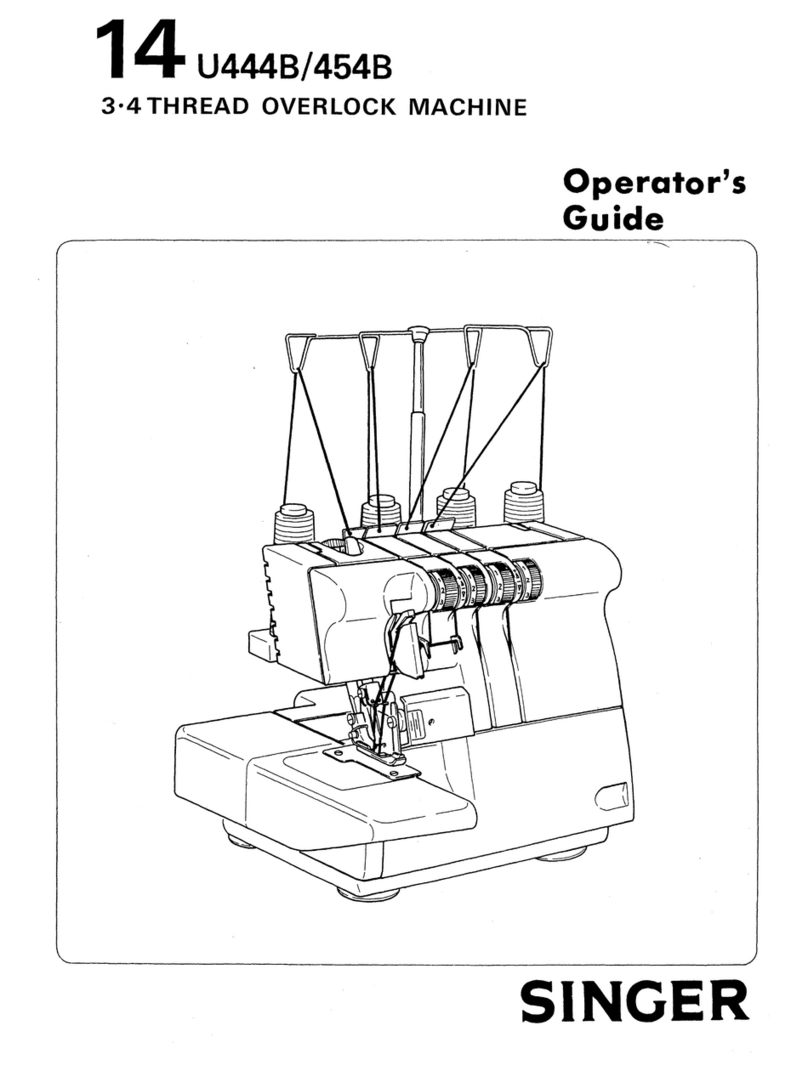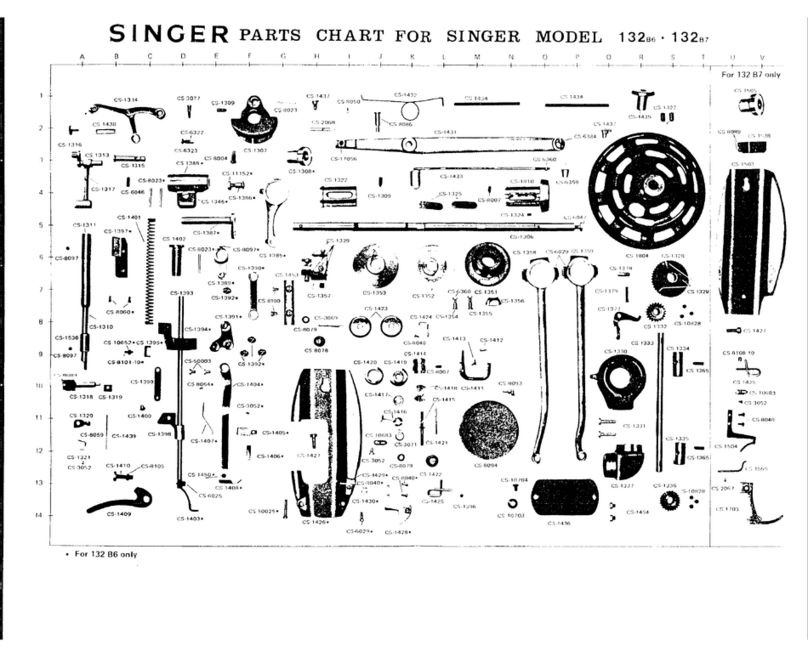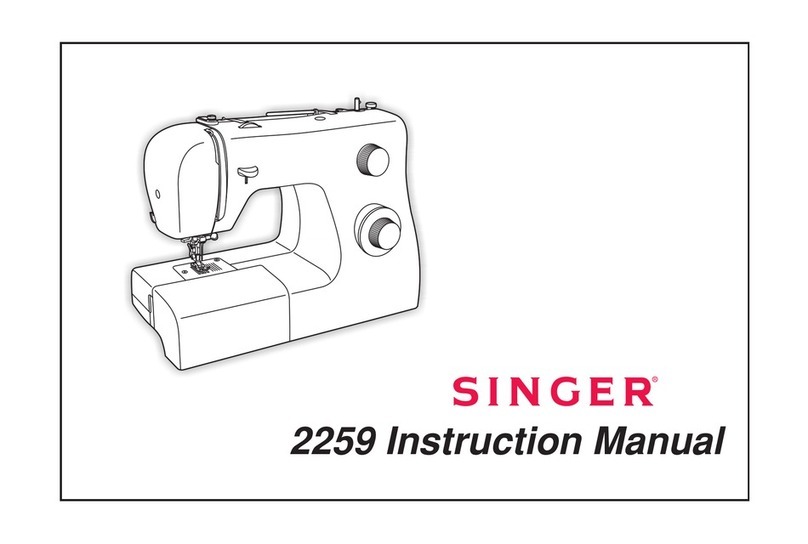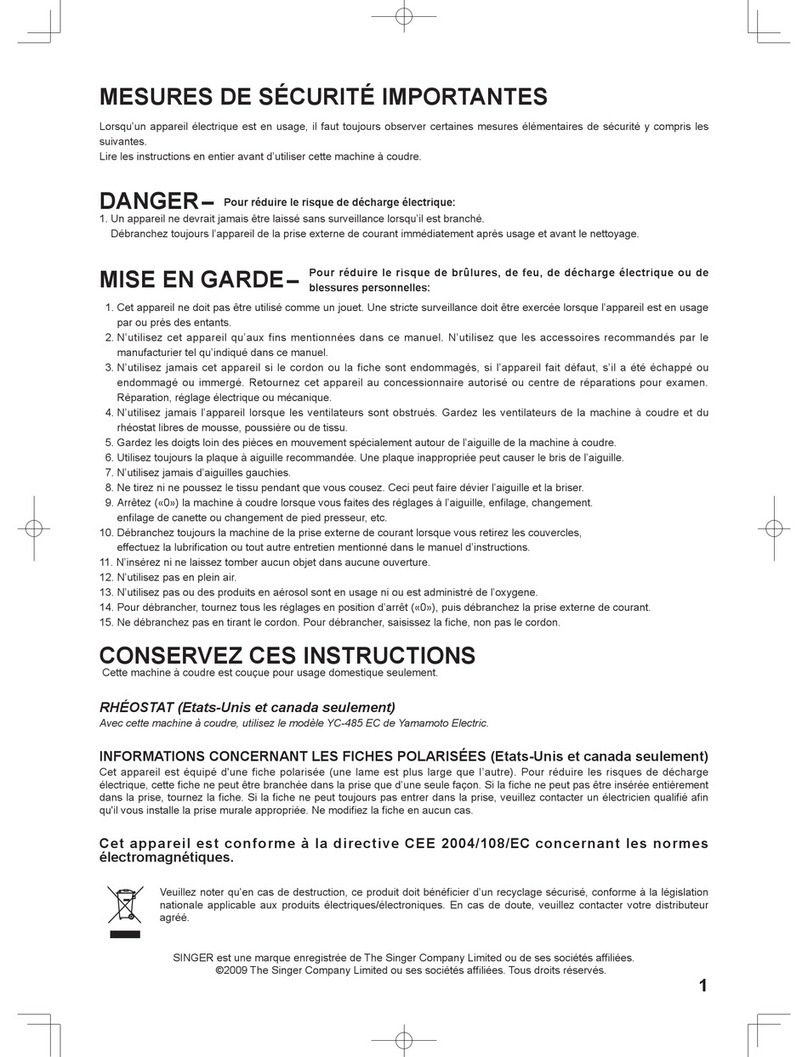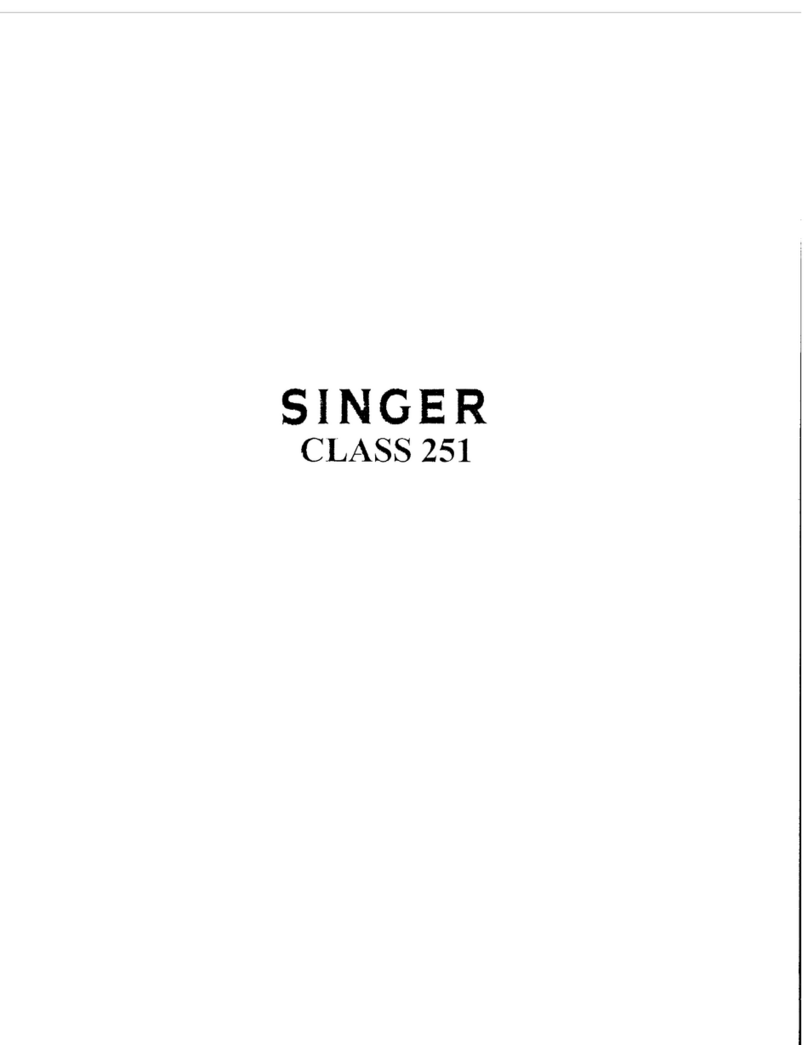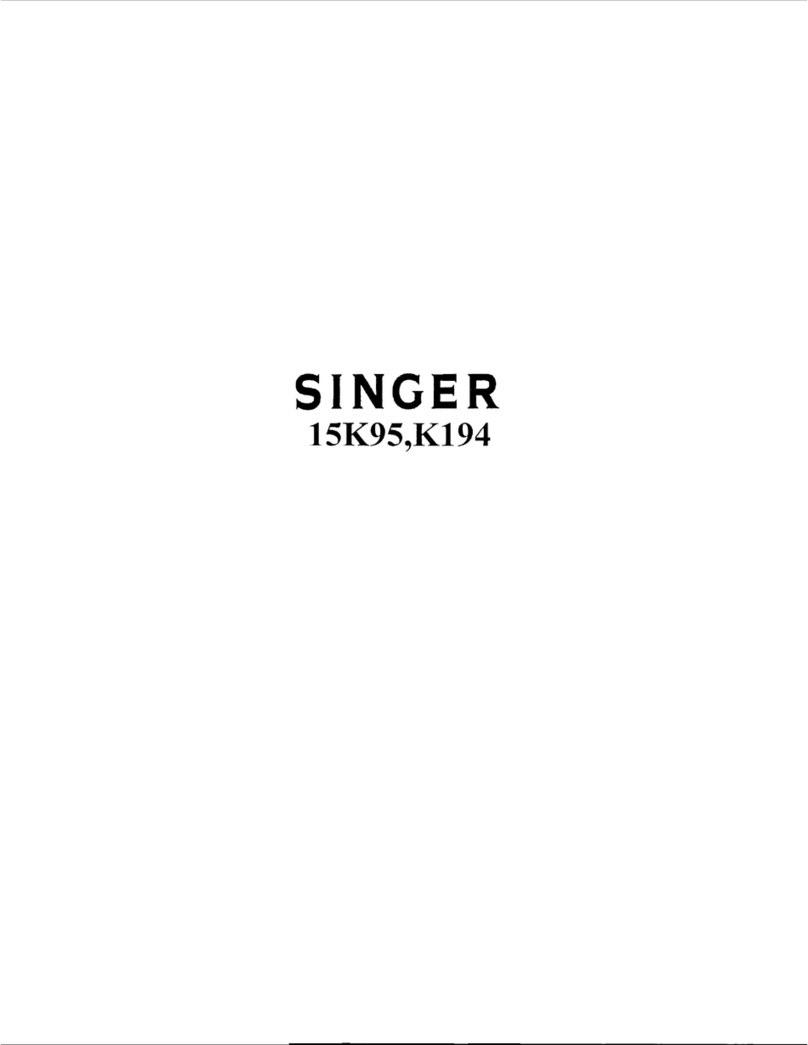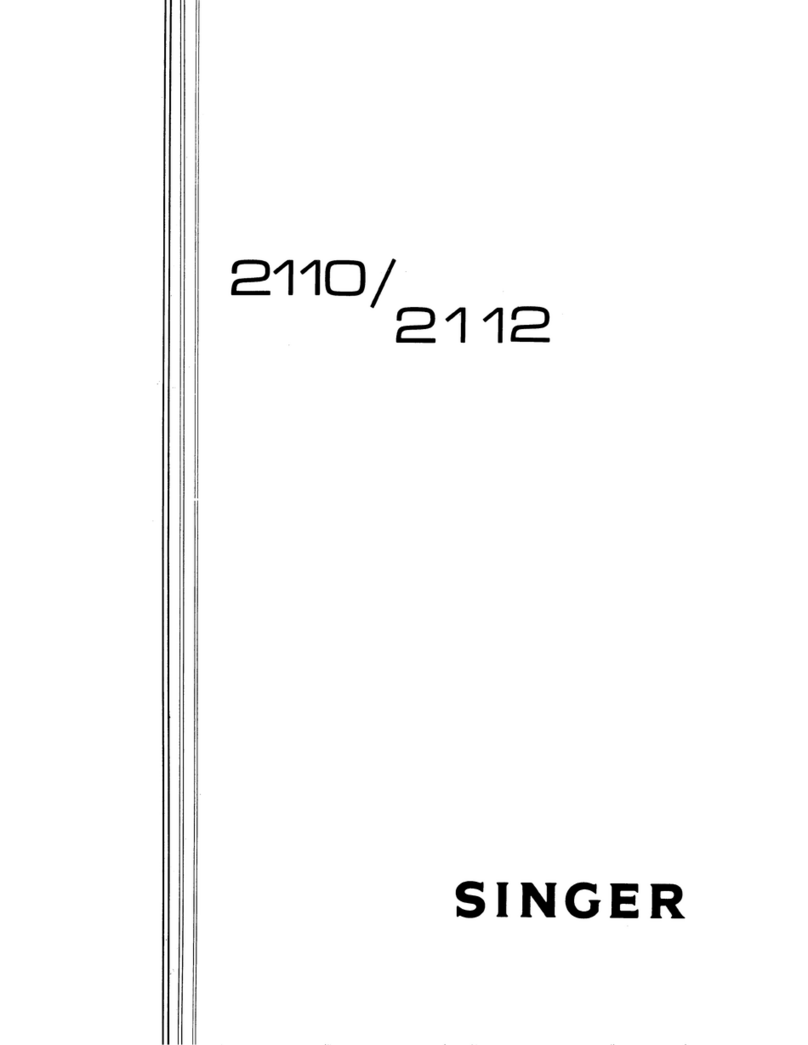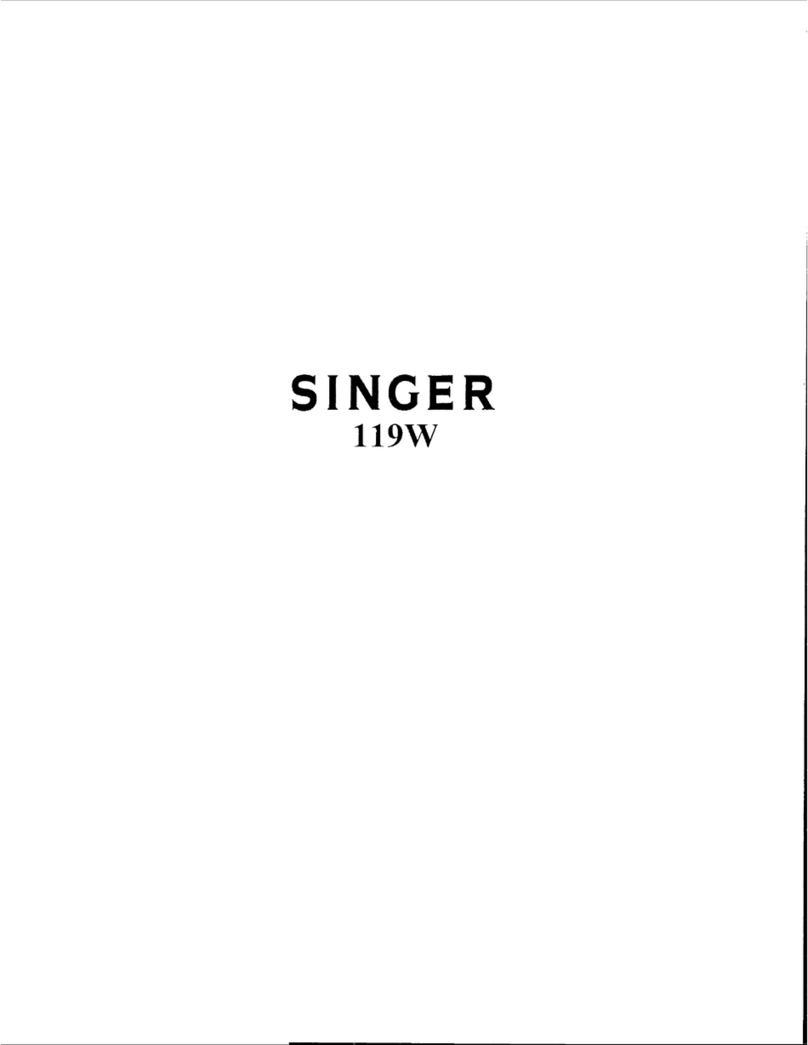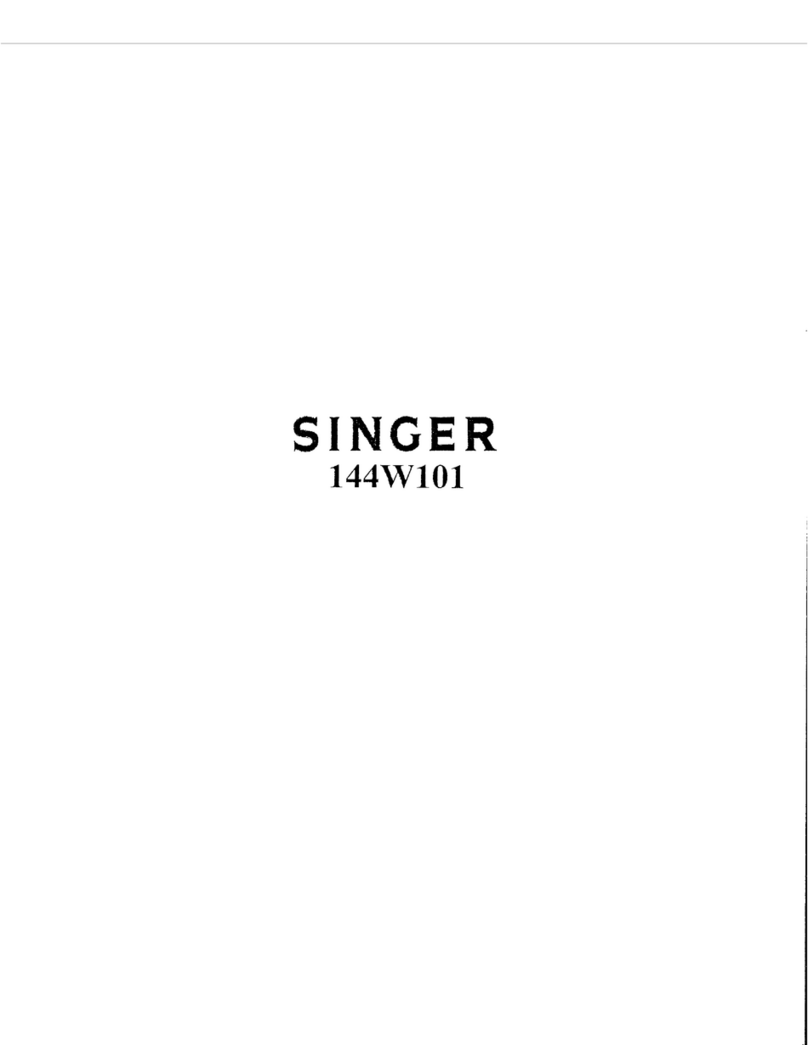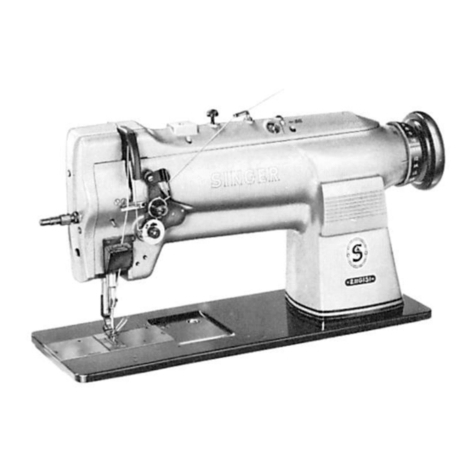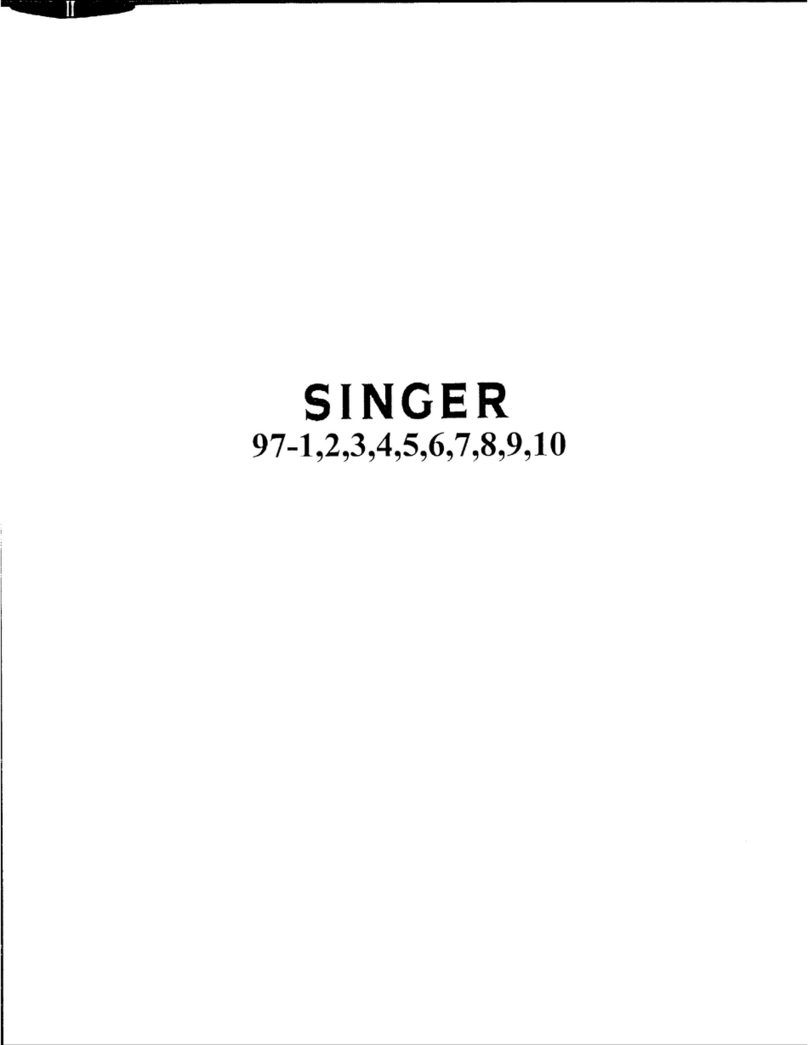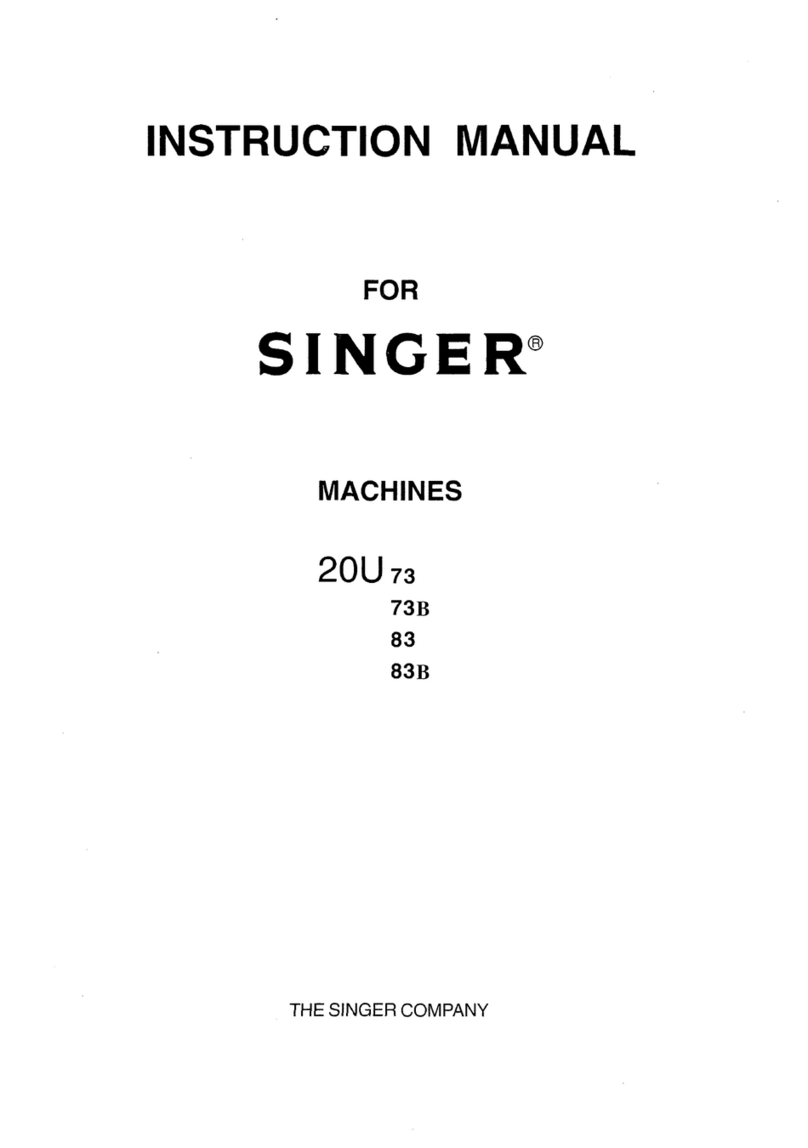16
To
Remove
the
Upper
Knife
(C,
Fig.
16), loosen the screw
(Z,
[•'ig.
16)
at
the end
of
the knife holder, press the knife holder
(V,
Fig. 16) toward the balance wheel
and
remove
the
knife.
When
replacing
the
Upper
Knife,
have
the
knife holder
in the lowest position
and
pressed
toward
the
balanc~
wheel,
insert the knife
and
set
it
so
that
its
cutting
edge is
just
below
the
cutting
edge
of
the lower knife,
then
tighten
the clamping
screw (Z, Fig. 16).
To
Chanre
the
Width
of
Bight
The
positions of the
trimmer
and
chaining-off finger deter-
mine
the
width
of
bight on the goods.
For
a wider bight, move the
trimmer
and
lhe
chaining-off
finger on
lhe
presser foot
to
the
right.
For
a narrower bight,
move
the
trimmer
and chaining-ofT finger
to
the
left.
If
the desired trimming margin
cannot
be secured by these
adjustments,
it
may
be obtained by removing the gib (D, Fig. 16)
and
replacing
it
at
lhe
left
of
the
upper
knife.
The
lower knife
should lhe:1 be adjusted accordingly.
To
Adjust
the
Upper
Knife
Tension
FIG.
17.
1\:NIFE
CRINIJER
Jl:l:l.i
l\1('
klll\·,·s
Ill
\I';\
;II\1';1\
s
han·
'-1''
in~
<'onl;td 11itlt
l'd<'h
olltcr;
lite
atllllltllt of pn·sstlll'
can
lw
obLtincd
,,,.
;tdjuslin~
\lw k11ik
ltoldn
guid,·.
\\'lll'n
tlw kni1·,·s
;111'
in
ron\;tcl,
till' spdl'l' lwl\\'l'<'n tlw
~ttidc
(Y.
Fi~.
IIi)
and
tlw
knilc
il-wr (\V,
Fig. IIi)
should
lw
about
,',
inch.
To
Sharpen
the
Knives
Enik
(~rin,kr
-11~\H,
is
recom-
!llCIHil'<l
fm
sh;tqwniltg
the
knives
on
:r-lacltiiH's
H\1~70,
HI
Kn
allll
S
IE
7:1.
l'
sc Kn
if<:
(
~
1inlh-r ·II
:1:1r;
[or l\Ltcltilll'
~ll~7ti.
The
usc of
Llwsc
grind•·rs
insmcs
the
correct
angle
and
shapl'
of tltc
cutting
crlge
of
both
knives.
